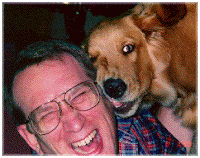updated 14 February 2016
 |
| <PREVIOUS PAGE ~ index ~ NEXT PAGE> |
For those looking for information on 19th ladies' fashion, the following free French publication in Google Books was well known for its illustrations of leading designs, including children's designs:
Music is fun, but perhaps these children are being a bit hard on the instruments. YouTube features a sampling of music that might have been heard, not on the internet, television, radio or even vinyl recording, but live. These were the days when, if you wanted to listen to music, you either made it yourself or went to a local gathering to hear it in person.
Music from 1850-1900 (sampler)
 |
| how not to play |
For those interested in further information on the American music scene in the 19th century, this Google (or hardback) book may be of interest. I was not able to locate a free copy. Currently, Google advertises its eBook copy for less than $8, and, outside of your local public library, that appears to be the cheapest alternative at this time (2016).
American Orchestras in the Nineteenth Century
John Spitzer
"Studies of concert life in nineteenth-century America have generally been limited to large orchestras and the programs we are familiar with today. But as this book reveals, audiences of that era enjoyed far more diverse musical experiences than this focus would suggest. To hear an orchestra, people were more likely to head to a beer garden, restaurant, or summer resort than to a concert hall. And what they heard weren’t just symphonic works—programs also included opera excerpts and arrangements, instrumental showpieces, comic numbers, and medleys of patriotic tunes.
"This book brings together musicologists and historians to investigate the many orchestras and programs that developed in nineteenth-century America. In addition to reflecting on the music that orchestras played and the socioeconomic aspects of building and maintaining orchestras, the book considers a wide range of topics, including audiences, entrepreneurs, concert arrangements, tours, and musicians’ unions. The authors also show that the period saw a massive influx of immigrant performers, the increasing ability of orchestras to travel across the nation, and the rising influence of women as listeners, patrons, and players. Painting a rich and detailed picture of nineteenth-century concert life, this collection will greatly broaden our understanding of America’s musical history." (description from Google Books)
Page 185 of the Earl J. Arnold Advertising Card Collection has some additional information on the musical landscapes of the 19th century.
This site includes historical materials that may contain negative stereotypes or language reflecting the culture or language of a particular period or place. These items are presented as part of the historical record, and do not represent or in any way reflect the personal views of the author of this blog, his ancestors, or his family.

You'll "catch my ear"
--if you comment here--.










Comments